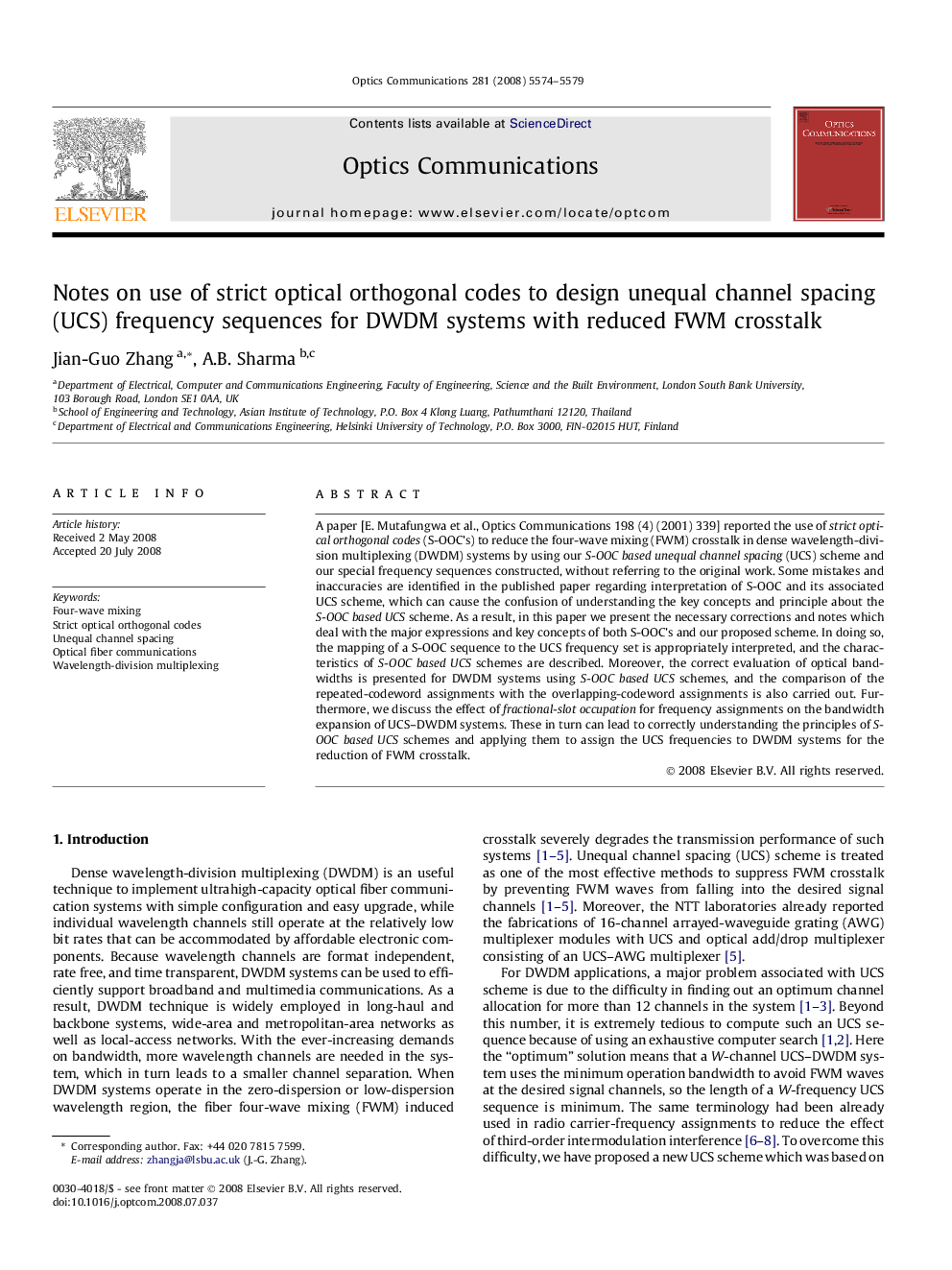| Article ID | Journal | Published Year | Pages | File Type |
|---|---|---|---|---|
| 1539746 | Optics Communications | 2008 | 6 Pages |
A paper [E. Mutafungwa et al., Optics Communications 198 (4) (2001) 339] reported the use of strict optical orthogonal codes (S-OOC’s) to reduce the four-wave mixing (FWM) crosstalk in dense wavelength-division multiplexing (DWDM) systems by using our S-OOC based unequal channel spacing (UCS) scheme and our special frequency sequences constructed, without referring to the original work. Some mistakes and inaccuracies are identified in the published paper regarding interpretation of S-OOC and its associated UCS scheme, which can cause the confusion of understanding the key concepts and principle about the S-OOC based UCS scheme. As a result, in this paper we present the necessary corrections and notes which deal with the major expressions and key concepts of both S-OOC’s and our proposed scheme. In doing so, the mapping of a S-OOC sequence to the UCS frequency set is appropriately interpreted, and the characteristics of S-OOC based UCS schemes are described. Moreover, the correct evaluation of optical bandwidths is presented for DWDM systems using S-OOC based UCS schemes, and the comparison of the repeated-codeword assignments with the overlapping-codeword assignments is also carried out. Furthermore, we discuss the effect of fractional-slot occupation for frequency assignments on the bandwidth expansion of UCS–DWDM systems. These in turn can lead to correctly understanding the principles of S-OOC based UCS schemes and applying them to assign the UCS frequencies to DWDM systems for the reduction of FWM crosstalk.
